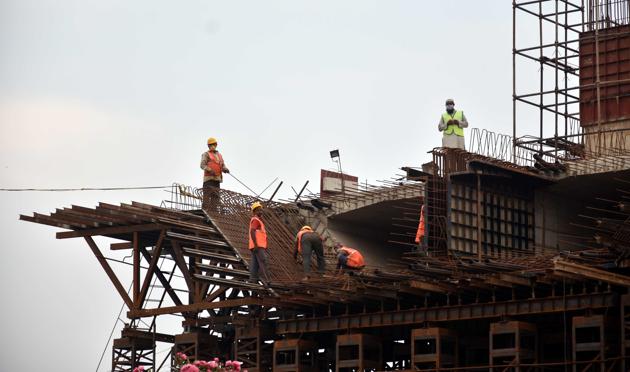How India can come out of the recession stronger | Opinion
Enhance productivity; invest in skilling, digital infra, agriculture; and come up with a New Deal
By the end of this fiscal year, India may need to recover by approximately a 10% negative swing in its Gross Domestic Product (GDP) growth. No current policymaker or leader has faced such a crisis. India will need to craft a suitable solution to deal with this. Crises provide seasoned politicians the space to overcome resistance from vested interest groups. What measures can India consider to lift the long-run productivity of the economy? I can suggest a few.

The virus has underscored that the most important market failure in the future is likely to be in respect to access and use of digital technology and data. During the lockdown, those who had smartphones were advantaged; those who didn’t suffer. A smart phone permitted access to health care, goods and services, digital payments, re-skilling, and education. The government must help India overcome digital apartheid by introducing a new paradigm where every Indian has a smartphone with easy access to data. So we should immediately phase out the sale of feature phones and subsidise smartphones (encouraged to be made in India) and data packages for Indians. It should also train a woman in every village to teach others how to access the full functionality of a smartphone. As we have proved time and time again, when given the right environment, Indians are quick to learn and prosper.
The virus forced schools and colleges to learn to impart education digitally. Digital learning across primary, secondary, and higher education has the ability to increase flexibility, engage learners, and expand access to more students. Governments should examine best practices for delivering high-quality instruction remotely, supported by trained teachers, holistic student services, and robust online platforms. Substantial investment in digital education will make societies more resilient to any future emergencies that may require a transition to remote learning. It will also help reinvent and modernise education. Digital education will be a powerful lever in reducing educational inequality in the medium-term.
Virtual care had its breakout moment with many providers making strides in weeks for what had previously took years or decades. Denmark rolled out virtual consultation software for specialists in two weeks, Kaiser Permanente moved from 15% of oncology care in virtual settings to 95% in one week, and Queensland Health expanded their virtual care capacity from 90 to 1,600 users. Hence, governments should be bold in what they aim to do. Furthermore, the coronavirus disease (Covid-19) has presented a unique opportunity for countries to reflect on the most essential features of their system to improve health outcomes at the same or lower costs. India needs to rethink its health systems and think of innovative ways to implement new care delivery models, data and analytics, policy-setting, payments, and other important topics in health.
Both industry and government have had to get acquainted with modern ways of working. Now, governments need to ensure that they not only retain this momentum but also accelerate their methods. A simple start would be if paper was removed from all bureaucratic offices. Couldn’t all files be moved digitally and digital initials on email become a substitute? Just think of the speed and transparency it would engender.Globally, digital transformation has seen rapid progress with governments focusing on building data control towers that aggregate different public and private data sources to aid decision-making and support scenario analysis. They have established digital platforms that help facilitate market operations in sectors where value chains have been severely disrupted. A lot can be done but let us just begin with paper.
The pandemic has triggered long-lasting structural changes that will affect up to 1.5 billion jobs within the next decade. A lot of workers have already lost their jobs and companies may be wanting to actually do away with some of the lost jobs even as the economy gets back to work. The government needs to focus on re-skilling workers in a mission mode. Vast swathes of workers out of employment should be supported by governments to obtain new skills, to improve productivity in core sectors in partnership with industry. It should identify the areas of need, areas capable of creating the maximum jobs — construction, health, textiles, logistics, schools, retail, and anything and everything that is low skilled and where our productivity is low. We should consider how we may use technology and training to re-skill and up-skill our workers.
Even though agriculture only contributes 17% to the GDP, it supports a bulk of the population. The government’s actions with respect to improving agricultural productivity should be celebrated and built upon. Cropping patterns should be reviewed and pricing of produce aligned. Water and power tariffs should be introduced. Improved productivity will release labour from agriculture and opportunities should be provided for them in rural areas. Food processing industries and contract farming should be stimulated.
Finally, the climate crisis should be part of a green economy agenda, post-Covid-19. There is an opportunity to make a push for a fossil-free, renewable electricity system. We need an urgent resolution of the mess that is in our power distribution. But more broadly, I agree with numerous commentators on the need for India to consider its version of the New Deal or a Marshall Plan by accelerating the investments earmarked in the national investment plan. Front-loading spending to build sorely-needed infrastructure (roads, rail, renewable energy, affordable housing, and provision of water) under a new deal would be the right antidote for the economy. Spending on infrastructure even by printing money will reduce transaction costs and raise productivity. As Benjamin Franklin said, “You may delay but time will not.”



